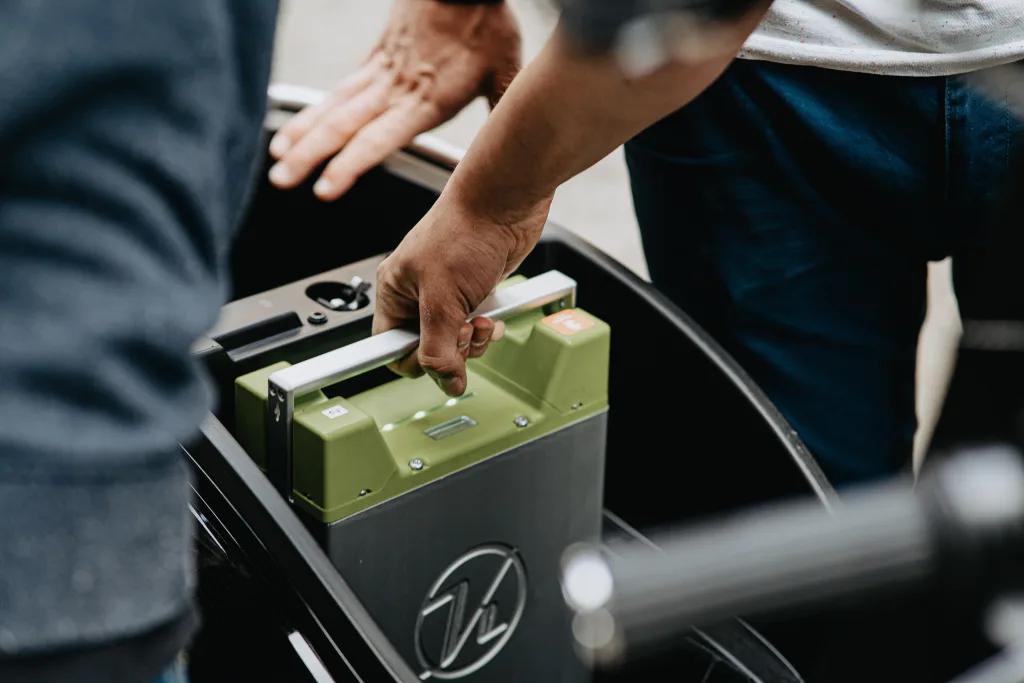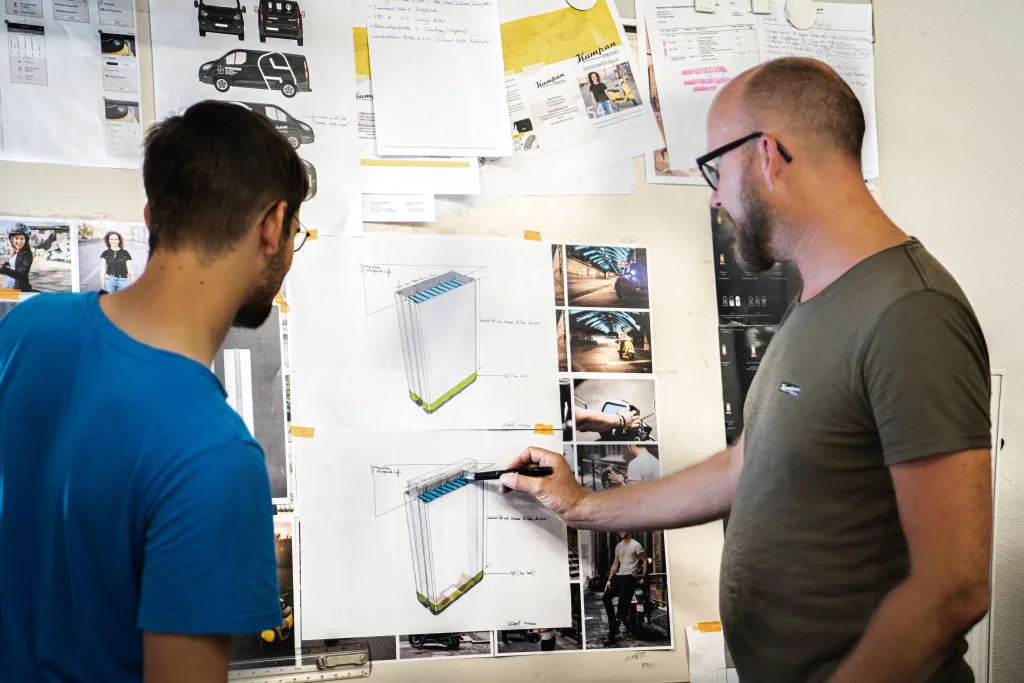Lithium, a crucial element in the production of batteries for various devices including laptops, smartphones, and electric vehicles, is facing a potential shortage in the coming years. As our reliance on these devices and electric vehicles increases, it’s important to understand the availability and future of lithium reserves.
Currently, lithium reserves are estimated to be able to meet the global demand for approximately 70 years. However, this estimation is based on the assumption that electric vehicles will dominate the car market. If this assumption holds true, the identified global reserves of lithium could be depleted within this timeframe.
One of the main challenges in maintaining a stable lithium supply is the concentration of resources in a few locations around the world. This creates a potential risk of geopolitical tensions and trade imbalances. Additionally, over half of today’s lithium production occurs in areas with high water stress, which further complicates the sustainability of lithium extraction.
To address these challenges and potential lithium shortages, researchers and scientists are exploring alternative battery technologies and manufacturing methods. Three notable options are sodium-ion batteries, solid-state batteries, and lithium-sulphur batteries.
Sodium-ion batteries are an emerging technology that shows promise in terms of cost, safety, sustainability, and performance advantages over traditional lithium-ion batteries. These batteries utilize sodium as the main component instead of lithium, which makes them a potential alternative to alleviate the strain on lithium reserves.
Solid-state batteries are another promising development in battery technology. These batteries use a solid electrolyte instead of the liquid electrolyte found in traditional lithium-ion batteries. Solid-state batteries offer several advantages, such as higher energy density, improved safety, and potentially longer lifespan.
Lithium-sulphur batteries are also being explored as an alternative to traditional lithium-ion batteries. These batteries use sulphur as the cathode material instead of the commonly used lithium cobalt oxide. Lithium-sulphur batteries have the potential to offer higher energy density and lower production costs, which could help mitigate the demand for lithium.
While these alternative battery technologies show promise, they are still in the early stages of development and commercialization. It will take time and further research to determine their feasibility and widespread adoption.
The availability of lithium reserves is a pressing concern as the demand for lithium-ion batteries, especially in electric vehicles, continues to rise. However, there are potential alternatives being explored, such as sodium-ion batteries, solid-state batteries, and lithium-sulphur batteries. These technologies could help alleviate the strain on lithium reserves and ensure a sustainable supply for the future. The future of lithium supply ultimately depends on the development and adoption of these alternative battery technologies.
Will The Earth Ever Run Out Of Lithium?
According to current research and projections, it is possible that the Earth may eventually face a shortage of lithium in the future. Lithium is a finite resource, and its availability is limited. Here are a few key points to consider:
1. Limited global reserves: Lithium is primarily extracted from lithium-rich minerals and brine deposits found in specific regions around the world. The largest lithium reserves are found in countries like Chile, Australia, Argentina, and China. However, these reserves are not infinite and will eventually deplete over time.
2. Growing demand: The demand for lithium has been steadily increasing due to its use in various industries, especially in the production of batteries for electronic devices and electric vehicles. As the popularity of electric vehicles continues to rise, the demand for lithium is expected to surge even further. This increased demand may put pressure on the available lithium resources.
3. Exploration and extraction challenges: Discovering new lithium deposits and extracting lithium from them can be a complex and costly process. It requires significant investments in exploration, mining, and processing technologies. Additionally, the environmental impact of lithium extraction, especially from brine deposits, raises concerns about sustainability.
4. Recycling and alternative technologies: To mitigate the potential shortage, recycling lithium batteries can help recover and reuse lithium. Efforts are being made to develop more efficient recycling methods. Additionally, researchers are exploring alternative battery technologies that do not rely heavily on lithium, such as solid-state batteries or batteries based on other elements like sodium or magnesium.
It is important to note that predicting the exact timeline for when the Earth will run out of lithium is challenging due to various factors like technological advancements, recycling efforts, and new discoveries. However, considering the finite nature of lithium resources and the growing demand, it is crucial to explore sustainable practices, alternative technologies, and efficient use of available resources to ensure a steady supply of lithium in the long run.

How Many Years Of Lithium Do We Have Left?
According to research by Kipping, a prominent expert in the field, the identified global reserves of lithium are estimated to last for approximately 70 years. However, it is important to note that this estimate is based on current consumption rates and technological advancements. The actual duration of lithium reserves may vary depending on various factors such as increasing demand, new discoveries, recycling efforts, and alternative technologies. It is also worth mentioning that lithium is not an infinite resource, and its extraction and production can have environmental and social implications. As the demand for lithium continues to rise, exploring alternative sources, improving recycling methods, and investing in sustainable practices will become crucial to ensure a steady supply in the future.
Will There Be A Shortage Of Lithium In The Future?
There are concerns that there may be a shortage of lithium in the future due to several factors. Currently, lithium supply is facing challenges primarily because of the surging demand for lithium-ion batteries, which are used in various applications such as electric vehicles, renewable energy storage, and portable electronic devices.
One of the main reasons for potential lithium shortages is the concentration of lithium resources in a few specific locations. The majority of global lithium reserves are found in countries like Australia, Chile, and Argentina. This geographical concentration makes the supply chain vulnerable to disruptions, geopolitical tensions, and trade restrictions.
Moreover, more than half of today’s lithium production takes place in regions with high water stress. Lithium extraction involves significant water usage, which can strain local water resources in already water-scarce areas. This can lead to environmental concerns and potential conflicts over water usage.
However, it is important to note that future developments in battery technology or alternative manufacturing methods could potentially alleviate some of these lithium shortages. Researchers are exploring alternative materials and technologies that could reduce or eliminate the reliance on lithium for batteries. Additionally, efforts are being made to improve lithium extraction processes and develop more sustainable mining practices.
While there are concerns about potential lithium shortages in the future, ongoing research and advancements in battery technology and mining practices offer hope for mitigating these challenges. The future of lithium supply will depend on the successful implementation of alternative materials and technologies, as well as sustainable mining practices.
What Will Replace Lithium?
There are several potential alternatives that could replace lithium as a primary material for batteries. Here are three options that show promise:
1. Sodium-ion batteries: Sodium-ion batteries are gaining attention as an emerging technology that offers cost, safety, sustainability, and performance advantages over traditional lithium-ion batteries. These batteries use sodium ions instead of lithium ions to store and release energy. Sodium is abundant and widely available, which reduces the cost and environmental impact of battery production. Sodium-ion batteries also have a lower risk of thermal runaway, making them safer to use.
2. Solid-state batteries: Solid-state batteries are another alternative to lithium-based batteries. These batteries use a solid electrolyte instead of a liquid one, which enhances their safety and stability. Solid-state batteries have the potential to offer higher energy density, longer lifespan, and faster charging times compared to lithium-ion batteries. They also have a reduced risk of leakage and thermal runaway. However, further research and development are needed to overcome manufacturing challenges and improve their performance.
3. Lithium-sulfur batteries: Lithium-sulfur batteries are being explored as a potential replacement for lithium-ion batteries. These batteries use a sulfur cathode instead of the traditional lithium cobalt oxide cathode. The use of sulfur allows for higher energy density, which means that lithium-sulfur batteries can store more energy. They also have the advantage of using abundant and low-cost materials. However, lithium-sulfur batteries face challenges related to the degradation of the sulfur cathode over time, which affects their overall lifespan and cycle stability. Researchers are actively working on addressing these issues to make lithium-sulfur batteries commercially viable.
Sodium-ion batteries, solid-state batteries, and lithium-sulfur batteries are all potential alternatives to lithium-based batteries. Each option offers unique advantages and challenges, and further research and development are required to optimize their performance and bring them to market.

Conclusion
Lithium is a crucial resource for the production of batteries, particularly for electric vehicles. However, the global supply of lithium is limited, and current identified reserves are estimated to last for about 70 years once electric vehicles dominate the car market. This scarcity is due to both surging demand and the concentration of lithium resources in a few regions, with over half of current production occurring in areas with high water stress.
To address potential lithium shortages in the future, researchers and manufacturers are exploring alternative options. One promising technology is sodium-ion batteries, which offer cost, safety, sustainability, and performance advantages over traditional lithium-ion batteries. These emerging batteries could provide a viable alternative and help alleviate the demand for lithium.
Another potential solution lies in the development of solid-state batteries. These batteries use solid electrolytes instead of liquid electrolytes, which can enhance their safety, energy density, and lifespan. By utilizing different materials and designs, solid-state batteries have the potential to reduce or eliminate the reliance on lithium, offering a more sustainable and abundant energy storage solution.
Furthermore, lithium-sulfur batteries are also being investigated as a potential alternative. These batteries offer a higher energy density compared to lithium-ion batteries, making them more efficient and capable of storing more energy. By shifting towards lithium-sulfur batteries, the demand for lithium could be reduced, extending the lifespan of global lithium reserves.
While lithium shortages may pose challenges, advancements in battery technology and manufacturing methods provide hope for a sustainable and abundant future. By exploring alternative battery options such as sodium-ion, solid-state, and lithium-sulfur batteries, we can mitigate the reliance on finite lithium resources and ensure a greener and more sustainable energy landscape.
